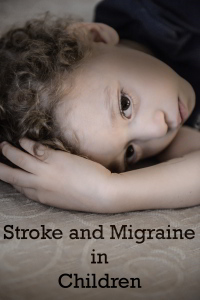If Your Child Had A Stroke, How Could You Tell?
Stroke in children may be rare compared to stroke in older adults, but it may be more common than you think. According to the National Stroke Association, it’s one of the top 10 causes of death in children.
There are special challenges when it comes to pediatric stroke. The causes are usually different, and treatments are different as well.
But even before we get to treatments, there’s another challenge. The symptoms of stroke in children are also different. Which means it can be harder to diagnose.
There are certain tools that are used to spot stroke at an early point in adults. These tools are tests that involve asking the patient certain things, or having them perform certain tasks (such as close their eyes and holding their arms out straight for 10 seconds). Examples of these tools are ROSIER (Recognition of Stroke in the Emergency Room), FAST (Face Arm Speech Test), and CPSS (Cincinnati Prehospital Stroke Scale).
In 2011, a study evaluated FAST and ROSIER to see how well they worked for children. The results were “fair to good”, but researchers suggested that further work needed to be done to refine the tools for use with children and adolescents. (See the study here: Can the FAST and ROSIER adult stroke recognition tools be applied to confirmed childhood arterial ischemic stroke?)
One of the questions that remained was how well these tools would do at differentiating stroke from other conditions, such as migraine. So a new study was done, published last month in the journal Neurology.
This time, the results weren’t as good. Using ROSIER and CPSS, it was found that these tools could not adequately distinguish from other “brain attacks” such as migraine, first seizure, Bell palsy, and conversion disorder (kind of a catch-all term referring to other physical problems triggered by psychological factors). (See Performance of bedside stroke recognition tools in discriminating childhood stroke from mimics.)
Finding a quick way to differentiate between some types of migraine and a stroke is an incredibly difficult and subtle task, whether in adults or children. Add in some of the other possible causes of these symptoms (think headache, speech disturbances, and weakness, such as facial weakness), and you’ve got a real challenge.
It is a temptation to diagnose what we know – “that sounds like my last migraine attack” or “that is exactly what happened to Aunt Liz when she had her stroke”. But the fact is, it’s hard for even the experts to make a quick and accurate diagnosis.
The bottom line? If your child shows stroke-like symptoms, don’t hesitate, don’t try to treat it yourself, call emergency and get to a doctor. Look for symptoms such as:
- headache (especially first headache, or unusual headache)
- weakness or drooping or numbness (especially in face, legs or arms)
- speech difficulties (using the wrong words, slurring)
- dizziness
- sudden changes in behaviour (including drowsiness)
- severe dizziness, balance problems
- vomiting
Could these symptoms be due to a headache disorder, and not to stroke? Yes. But a stroke requires more immediate attention, so don’t take the chance.
The good news is that children tend to recover more easily than adults. Good treatment is available, especially if the stroke is recognized early.
The same goes for migraine, and many other conditions. Catching migraine early can help avoid major problems later in life.
For more help, see Would You Know If Your Child Was Having a Stroke? (Cleveland Clinic)
